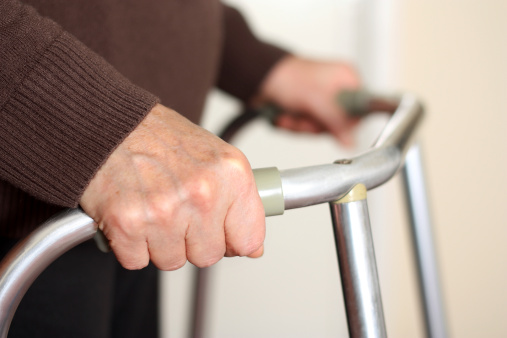
A carefully structured, moderate physical activity program can help reduce the risk in older people of losing the ability to walk without assistance, according a recent study in JAMA. That is critical, say the study authors, because walking unaided is perhaps the single most important factor for maintaining independence in older age.
A clinical trial to assess the exercise included over 1,600 men and women ages 70 to 89 and found that following a moderate physical activity program for an average of 2.6 years reduced the risk of major mobility disability by 18 percent and that participants in the trial were better able to maintain their ability to walk without assistance for about a quarter of a mile. Participants were randomly assigned to activity or to a health education program focused on topics related to successful aging and came from urban, suburban, and rural communities.
The trial was conducted by researchers at the University of Florida, Gainesville and Jacksonville, and seven other clinics across the country including Stanford University in Palo Alto.
“We are gratified by these findings,” said Richard J. Hodes, M.D., director of the National Institute of Aging which provided funding for the study. “They show that participating in a specific, balanced program of aerobic, resistance, and flexibility training activities can have substantial positive benefits for reducing risk of mobility disability. These are actionable results that can be applied today to make a difference for many frail older people and their families.”
The physical activity group of 818 people gradually worked up to the goal of 150 minutes of weekly activity, including 30 minutes of brisk walking, 10 minutes of lower extremity strength training, 10 minutes of balance training, and large muscle flexibility exercises. Their programs took place at a clinic twice a week and at home three or four times a week. The 817 people in the comparison group participated in weekly health education workshops for the first 26 weeks, followed by monthly sessions thereafter. They also performed five to 10 minutes of upper body stretching and flexibility exercises in each session. Participants in both groups were assessed every six months at clinic visits.
“When we finished the exercise program at our site, the people were so disappointed that the classes were over,” he said. “We know that many of them are continuing to exercise and we are so pleased that they have kept up with this,” said Marc Pahor, MD, the lead author of the study.
The study in addition to the NIA, funding for the study also came from the National Heart, Lung, and Blood Institute.





